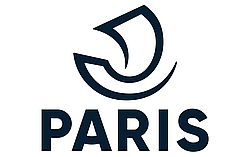In connection with the Paris Biodiversity Plan:
- Study and define the framework of green and blue infrastructures endorsed by the Grenelle process
- Reinforce the green network and its role as an ecological corridor
| – 23% of the Paris region to be planted with vegetation – 62 hectares of new green spaces have been opened to the public in Paris since 2001 – 47,000m² of roofs planted with vegetation on municipal buildings (2012 inventory) – More than 100,000 trees within Paris proper (excluding woodland) – 11,000 teqCO2 captured by the two Paris Woods (18.5 km²) per year (2009 Carbon footprint report) |
Since 2007, the Paris greening programme has been one of the emphases of the adaptation strategy of the Paris Climate Plan which aims to prepare the city for climate changes and dwindling resources.
Planting in Paris may take several forms: public parks and gardens (more than 500), woodlands, 20 cemeteries with trees, shared gardens (nearly 90), private gardens, tree-lined boulevards and streets planted with grass, green walkway created on the “petite ceinture” former railway line, rain gardens, vegetation integrated into buildings, or even bus shelters with plants! The greening programme extends to all these areas in the city which cover nearly a quarter of the Paris territory, involving repeated and interconnected additions aimed at improving the quality of life and attractiveness of Paris. One of the objectives is to reduce urban heat island effects within Paris and its inner suburbs.
During the heatwaves of 2003, the night-time temperature in central Paris rose to 8°C above temperature readings in the rest of the Île-de-France region. Plants add moisture and cool the air through the phenomenon of evapotranspiration. The shelter effect provided by trees also prevents buildings and streets from heating up. Thus vegetation can be a major asset to cool the city down during hot summer periods, combating microclimates generated by urban density. The greening of public spaces and buildings therefore offers improved comfort for Parisians in summer, in a context where heatwaves are becoming the norm.
This cooling is however subject to two constraints:
- extensive irrigation required during repeated droughts and heatwaves, as confirmed by the results of the EPICEA study (led by Météo-France for the City of Paris). These findings show the importance of plant hydration in order to obtain a cooling effect in the City.
- the adaptation of tree and plant species, in particular to withstand the new weather conditions.
In 2012, Paris was awarded a Silver Territoria prize in the “Development of public spaces” category for its experiments with vegetation-planted roofs. In the same year, greening in public spaces was extended to 5,705m² additional green areas and 6,430m² of roofs on public buildings, at a cost of 158,000 euros. In 2014, 30 innovative greening planting projects were trialled in real conditions and a study on the thermoregulation role of green spaces and wetlands in Paris attempted to assess and quantify the cooling effect of planted areas and wetlands in Paris in the summer period.
At the same time, the Paris Biodiversity Plan voted in 2011 advocates the preservation and enhancement of nature in the city with precise goals in terms of management practice to limit pollution and harmful effects on the environment. The challenges are different to those of the Climate Plan but the planting of vegetation is a shared response. It is now a question of characterising the way, particularly in public facilities, vegetation can meet the duak challenge of cooling and biodiversity: minimum soil thicknesses, species to plant, plant watering systems, etc. In the Biodiversity Plan, the City set itself the target by 2020 of programming seven hectares of planted roofs across the whole Paris territory. This objective is backed up by the 2014-2020 term program which anticipates the creation of 100 new hectares of planted roofs and facades and the collaborative development of urban agriculture.
Planted roofs and the restoration of soil permeability through the presence of plants are also supported in the future Paris Rain Plan, a key response to the risk of flooding which Paris is faced with during heavy rains. Planted roofs relieve the burden on the drainage and rainwater treatment system and limit discharges into the Seine. In this regard, the City is engaged in a broader reflection on the establishment of rainwater zoning to force property owners to recover a minimum amount of rainwater based on the size of the plot for new constructions.
Finally, for private spaces, which are also important in the city-wide greening project, there will be extensive documentation available to Parisians to help them change their practices and implement projects.

